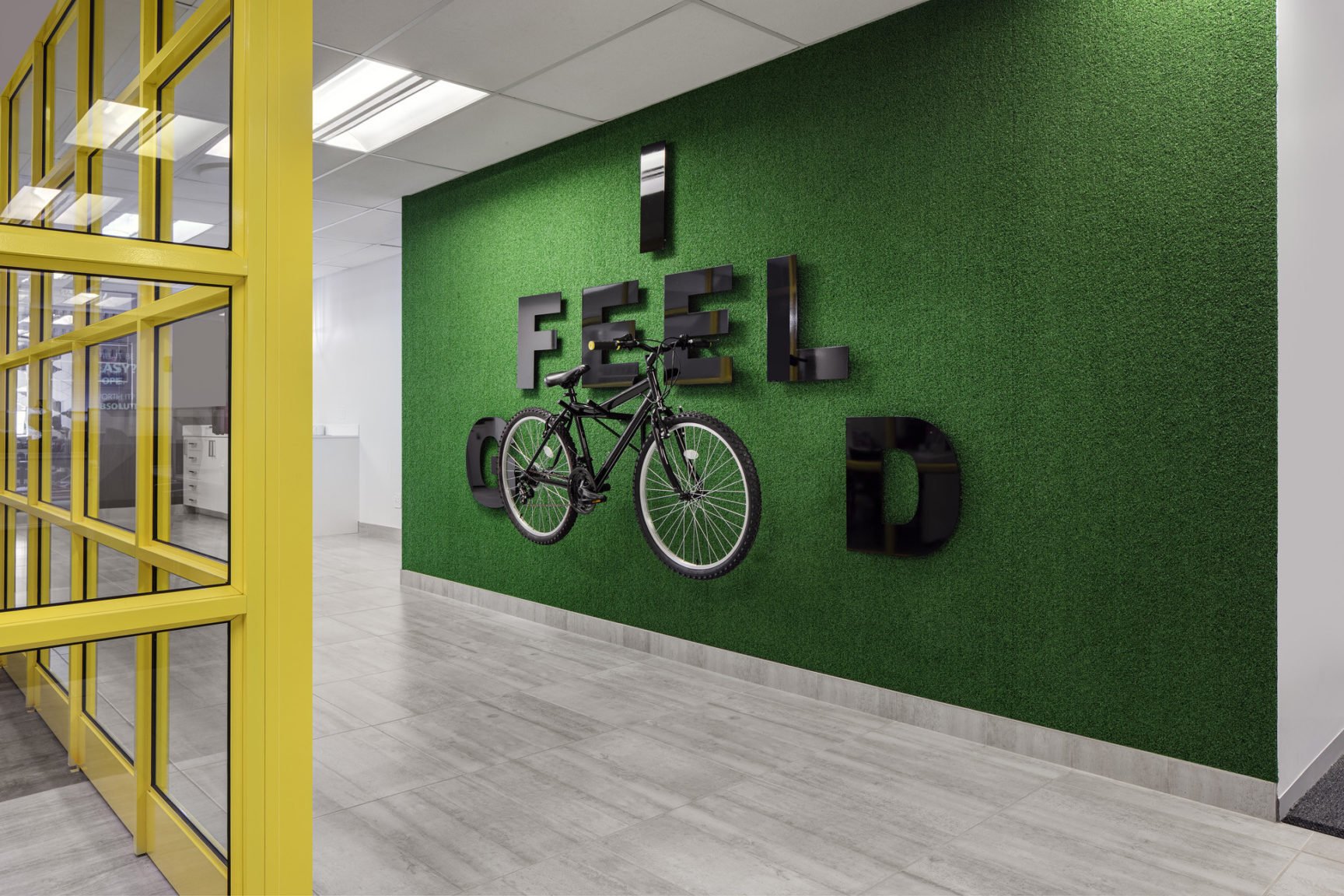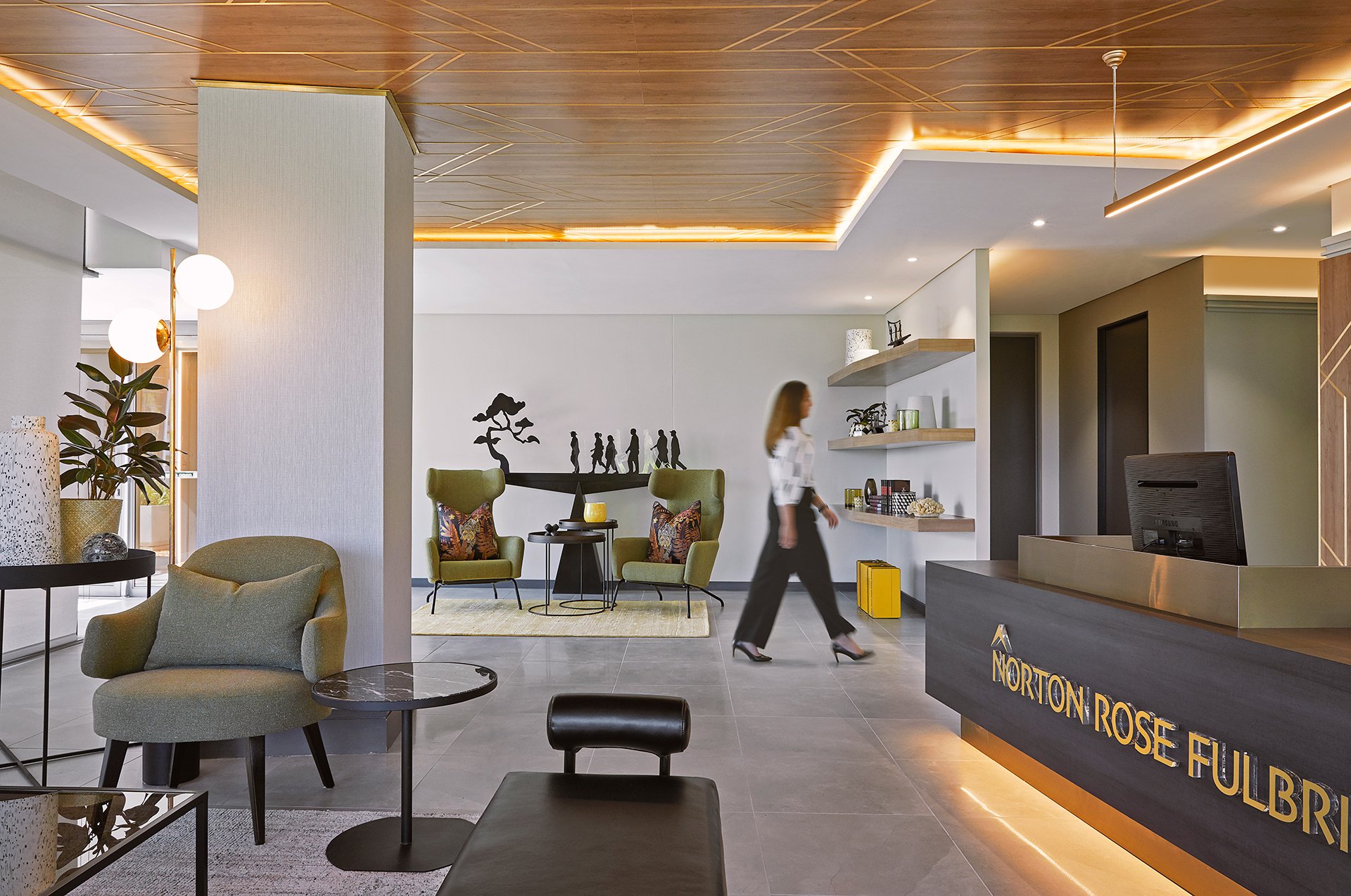The new normal is anything but for the corporate design industry, prompting firms to adapt to altered ways of working and a new approach to doing business. So what is the current state of corporate design in South Africa?
The changes and challenges brought about by COVID and the shifting workplace norms in 2020 have seen corporate designers pivot to adapt to the new landscape, and assess what that means for them.
Currently, the corporate design landscape looks to be in flux. Director of Boogertman + Partners, Bob van Bebber, notes that there’s limited movement at the moment and that his firm is currently finding that most of this is in the fit-out renewal space, often as a result of the restructuring of businesses, in some cases due to downsizing.
Trend Group Senior Designer Jean Swanepoel tells us that their clients are looking primarily at how they can adapt to the move away from old working norms. “Today the corporate landscape is not office specific anymore, but rather wherever you can sit with your laptop and converse with your colleagues,” she says. “Finding a way to come together and collaborate has become the focus for most of our clients.” For Swanepoel, client flexibility is also key in terms of planning future office environments, whether that’s accommodating health and safety measures or working around a tight budget.
However Linda Trim, Sales and Marketing Director at Giant Leap Workplace Specialists feels otherwise. “Corporates are continuing to design with the intention to go back to work. Sure some companies have approached this time as a way to downsize and reduce costs, but very few have actually gone through with it. Those are the firms who believe in their brand and its culture, and are building their head offices as they would have in the past. WFH has certainly been a big thing, but it is starting to show cracks and employees are getting desperate to get back to the office.”
Flight Centre Offices and Future Space Offices by Giant Leap Workplace Specialists
Smaller budgets leads to smaller but better spaces
Emma Luyt, Managing Director of Tétris South Africa maintains that while the notion of an office is changing, it won’t disappear outright. “We still need the office as a place for breaking down silos and the transfer of knowledge,” she says. “The purpose is shifting towards a space for in-person collaboration. We’re starting to review the principles that we’ve applied in the past, a process that’s been accelerated as a result of COVID. The industry is becoming more competitive and clients expect the best of the best. So while spaces will be slightly smaller (as we’ve seen that focused tasks are effectively completed at home), they will incorporate beautiful views and higher spec finishes.”
Challenges are a reality across the board and staying competitive means rising to meet them. Van Bebber finds that budget constraints and project scarcity is the most pressing of these. “Difficulties in finding new affordable products and the need to be the first to market new solutions coupled with a continued downward trend on fees has put mounting pressure on delivery and ultimately quality,” he says.
Swanepoel also notes that clients are downsizing their spaces due to both, the flexible working culture as well as budget constrictions. ”Staying within a client’s budget while meeting client expectations can be challenging. We are focusing our efforts into creating solutions that are innovative, efficient and cost-effective. There is no one size fits all when creating the ideal workspace. Understanding the business helps us find unique solutions.”
Luyt has noted a lingering resistance to going back to how things were. “In the current context of the pandemic, people are reluctant to return to the office, so the biggest challenge is to ensure that we design spaces that make people feel at ease, comfortable and safe,” she says.
BP Head Office in Rosebank by Boorgertman + Partners Design
So have current logistical constraints influenced designers to substitute global brands for local ware?
Cost considerations and delivery issues have certainly led designers to rethink sourcing and speccing as well. “We typically use a mixed bag of local and international brands when specifying products,” says Van Bebber. “In some cases though, we are finding it difficult to access some international product due to delivery shortages, and with no local similar alternatives we are having to redesign or rethink the product and design to meet project delivery schedules, which typically are very tight.”
“The local production of furniture has changed drastically in South Africa in the past few years,” says Trim. “From never having suitable local products, we now have quite a few ranges that are comparable to international brands, and at much lower pricing and quick delivery times. Companies such as AngelShack have won the International Good Design awards a number of times, and their products are as good if not better than many of the imported brands in the corporate market. Plus local production, cradle to cradle sustainability, and antibacterial are all becoming paramount to our choices in purchasing furniture.”
Trend Group for the most part relies on longstanding supplier relationships, with priority on being able to deliver spaces that empower across sectors. “We create spaces that inspire and motivate people,” says Swanepoel. “Each space reflects the different needs and requirements for your unique workflow, that aligns people and processes for cultural transformation. We have local and international partners, brands and affiliations to ensure that our delivery partners and employees are diverse and can deliver the quality that we are known for.”
Tétris is looking closer to home for suppliers. “We’re leaning towards more local brands, particularly in South Africa where we have to contend with exchange rates and longer lead times for imported products,” says Luyt. “As South Africans, we are proud of what we can deliver to international standards but with authentic local flavour, and supporting local designers and artists is a great way to inject our unique aesthetic into the spaces we design.”
Norton and Rose Fullbright, Sony Music Entertainment, and Pepsico Offices by Tetris Design
The process of going back to the workplace
Van Bebber believes that efficiency remains a key word given the cost of occupation, but that said there is a much more open discussion about the quality of the space and ingredients that make up a quality space. “The conversation is around how a space responds to the needs of people coming back to the office, and what it does to encourage them to come back and feel safe,” he says.
Swanepoel notes five primary trends, the first being flexibility. “Different roles require different tools, resources and focus, which means using your space smartly and creating an engaging environment,” she says. Sustainability is next, and she maintains that in the workplace of the future, businesses need to not only care for the environment but enact the change that is necessary. Employee wellness is also key. “A huge current focus on health and an awareness of how it directly impacts a business is causing companies to become more invested in wellness for workers,” she says. “Collaborative workspaces continue to be popular for their ability to foster connection, which is definitely something we need now. Being able to bounce ideas off one another and getting instant feedback is proving beneficial to all types of industries. By creating collaborative spaces, you are engaging your employees in new ways.”
Balanced design too, in line with a move to wellness, is becoming a consideration. “More people are becoming conscious of a healthy work/life balance,” says Swanepoel. “The importance of finding a happy balance is crucial. Many companies are bringing in this balance with recreational spaces, quiet areas and living décor. Creating a balanced workspace helps employees feel energized, motivated and inspired.”
Luyt has also seen a move towards a more inclusive and engaging way to approach the workspace. “Our clients are looking for spaces that bring people together, foster an exchange of ideas, inspire creativity, and instill a sense of belonging. They want office spaces where people can connect and collaborate.”
Uber Office in South Africa by Trend Group
Is the corporate design industry thriving? Are there still multiple projects on the go?
“The big cities are carrying on,” says Trim. “Big corporates, especially international ones, are building like before. However, some of the smaller firms are reticent about building new offices until we have a vaccine that will allow us to easily bring people back to work. Many are fearful of another lockdown and having to pay rent unnecessarily. Many clients begin considering a hybrid office but once we get into the design, they realise how hard it is to plan without dedicated desks for their employees. And it goes back to a normal neighborhood office. Nevertheless, there is certainly more room for technology throughout, plus a demand for breakaway areas for zoom calls.”








